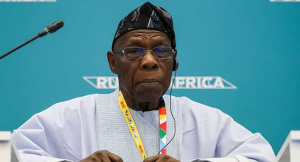
The National Bureau of Statistics (NBS) has reported a decline in Nigeria’s unemployment rate, which stood at 4.3% in the second quarter (Q2) of 2024. This marks an improvement from 5.3% in Q1 2024 and 5.0% in Q3 2023, reflecting a positive shift in the country’s labour market conditions.
Improved Labour Market Indicators
The Labour Force Participation Rate rose to 79.5% in Q2 2024, up from 77.3% in the previous quarter, signaling increased workforce engagement. Similarly, the Employment-to-Population Ratio climbed significantly to 76.1% from 73.2% in Q1 2024.
“This indicates that a higher proportion of the working-age population was gainfully employed during the period,” the NBS stated in its report.
Self-employment remained the dominant form of employment, accounting for 85.6% of total jobs, an increase from 84% in the preceding quarter. Informal employment also saw a slight rise, reaching 93%, highlighting the continued reliance on informal jobs in the Nigerian economy.
Urban vs. Rural Disparities
The report revealed disparities between urban and rural areas. Urban unemployment stood at 5.2%, down from 6.0% in Q1 2024, while rural unemployment dropped to 2.8% from 4.3% in the previous quarter.
The NBS attributed the lower rural unemployment rate to the dominance of agriculture and informal activities, contrasting with urban areas, which rely more on formal and service-driven jobs.
Youth and Gender Unemployment
Youth unemployment (ages 15–24) showed a marked decline, dropping to 6.5% in Q2 2024 from 8.4% in Q1. However, gender disparities persisted, with female unemployment at 5.1% compared to 3.4% for males.
“This underscores the need for targeted gender-inclusive policies to address the employment gap,” the report highlighted.
Other Key Metrics
• Time-related underemployment, which measures workers seeking additional hours, decreased to 9.2% from 10.6% in Q1 2024.
• Labour underutilisation metrics also improved: LU2 (unemployment and time-related underemployment) fell to 13.0% from 15.3% in the previous quarter. LU3 and LU4, which include potential labour force participation, declined to 5.9% and 14.5%, respectively.“The unemployment rate for Q2 2024 was 4.3%, reflecting a marginal increase of 0.1 percentage points compared to the same period last year. By residence, the unemployment rate was 5.2% in urban areas and 2.8% in rural areas,” the NBS report concluded.
These improvements in labour market indicators signal gradual recovery and increased economic activity in Nigeria, though challenges such as gender disparities and reliance on informal jobs persist.








